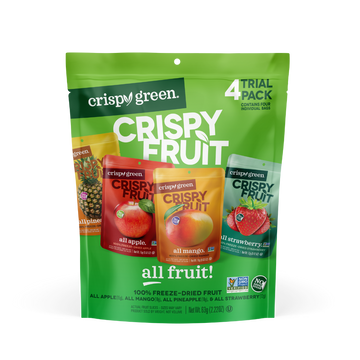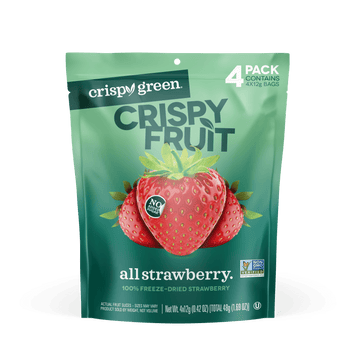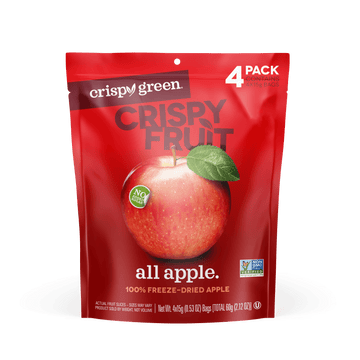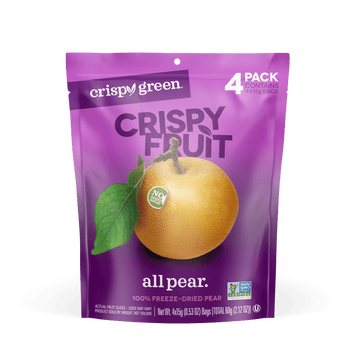
If you’re a newcomer to the freeze dried snack craze, you may not know the difference between freeze dried vs. dehydrated snacks. While freeze dried snacks may sound similar to traditional dehydrated (or simply dried) snacks, there are a few key aspects in which the two differ in terms of texture and taste, among other ways.
Below, we’ve highlighted six of the main differences between freeze dried vs. dehydrated snacks.
The Differences Between Freeze Dried vs. Dehydrated Foods
Freeze Dried vs. Dehydrated: The Process
The best way to understand the difference between freeze dried vs. dehydrated snacks is by learning about the processes to make each of them. People began dehydrating snacks as far back as 12,000 BC using the air to dry out foods such as fruits and vegetables to store and eat.Check out our whiteboard video below that further explains how our Crispy Fruit is made using the freeze drying process!
Freeze Dried vs. Dehydrated: Texture
Because freeze drying removes nearly all of the moisture or water content from the food, it has a much crispier, crunchier texture than food that is simply dehydrated. Dried fruit, for example, tends to be chewy and sweet because it is still holds about a third of its original water content. On the other hand, fruit that is freeze dried contains little to no moisture content at all. This allows foods that are freeze dried to have a crispy, crunchy texture.Freeze Dried vs. Dehydrated: Shelf-Life
Because dehydrated foods contain about a third of their moisture, they have a much shorter shelf-life than freeze dried foods. The water that is still trapped inside dehydrated foods can easily be spoiled by different molds and bacteria. On the flipside, freeze dried foods can last for years in the proper packaging at room temperature and maintain its original flavor and crispiness!Freeze Dried vs. Dehydrated: Additives
One of the major differences between freeze dried vs. dehydrated snacks is in the use of additives. Because freeze drying removes most of the moisture in each snack, there is no need to add in additives to preserve the food for long periods of time. Dried snacks, on the other hand, usually do require a fair amount of preservatives to keep them fresh.Freeze Dried vs. Dehydrated: Nutrition
Freeze dried foods retain all or nearly all of their original nutrients after undergoing the freeze dried process. This is because for the most part, the freeze drying process only removes the water content in food. Dehydrating can strip foods of more of their nutritional content due to the heating processes that are commonly used to evaporate some of the moisture on the inside of the food.Freeze Dried vs. Dehydrated: Taste
Of course, many consumers wonder what the difference is in terms of taste when it comes to freeze dried and dehydrated snacks. Dehydrated foods can lose much of their flavor, mainly due to the heat drying processes used to remove the moisture. Freeze dried foods (including fruits!) keep most of their original flavor until they are ready to be enjoyed.Want to Learn More about Freeze Dried vs. Dehydrated Snacks?
If you want additional information on the differences between freeze drying and dehydrating snacks, shoot us an email at info@crispygreen.com. We’d love to hear from you!
Tags:













